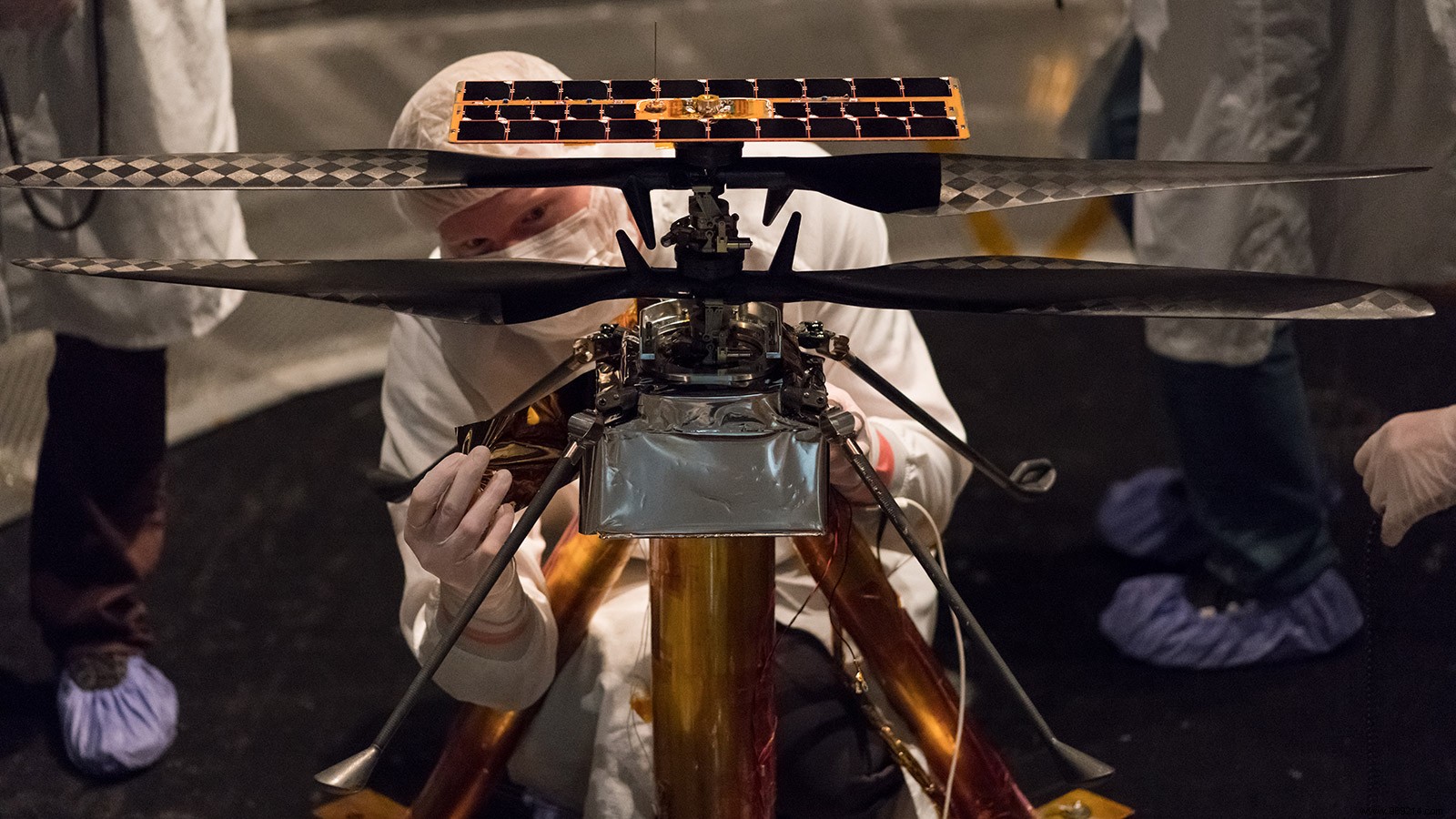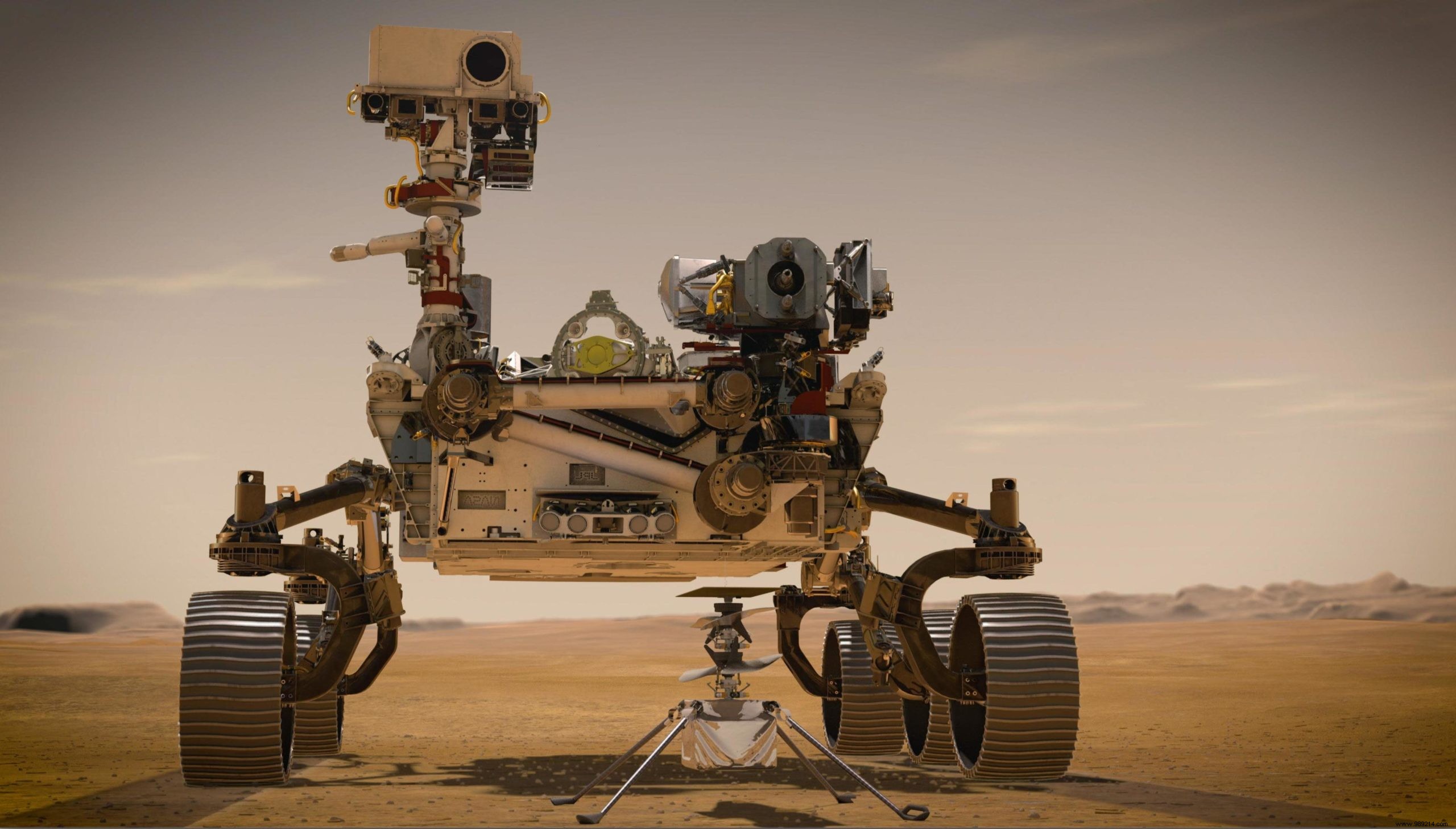Ingenuity, the first helicopter sent to another planet, survived the riskiest seven minutes of the mission. Still installed in the "belly" of Perseverance, it is doing well, and is now preparing for a historic first flight.
As you know, Perseverance, NASA's Mars 2020 mission rover, successfully landed on the red planet this Thursday, February 18, after a journey of nearly seven months in space. As a reminder, its main objective will be to search for traces of past life, and to set aside the most promising samples for a future return to Earth. However, the American agency also intends to take advantage of this mission by testing its small rotorcraft named Ingenuity .
The helicopter, still nestled in the belly of Perseverance, has since "woken up", and even communicated with the mission controllers of the Jet Propulsion Laboratory (JPL) of the NASA on the night of Friday to Saturday, via the Mars Reconnaissance Orbiter (MRO). A priori, everything was going very well, said the JPL. Following this positive report, the researchers then charged the six lithium-ion batteries rotorcraft at approximately 30% of their planned capacity this Saturday, to keep it "warm".
It's also important to power up those batteries since until now Ingenuity has drawn its power from Perseverance. On the other hand, once "released" in the wild, the rotorcraft will have to fend for itself by recharging thanks to small solar panels.
JPL plans to charge these batteries to 35% capacity in a few days, then repeat these charging sessions weekly while awaiting deployment to the Martian surface.
To do this, researchers will need to disable the locking mechanism that keeps Ingenuity in place. A cable cutter will then trigger, allowing the spring-loaded arm holding the helicopter to begin rotating it to present it horizontally. A second pyrotechnic device will allow the release of its four legs, then Ingenuity will land on the surface.

Once the helicopter lands on the surface, the JPL will give itself approximately thirty Martian days [31 Earth days] to operate a first test. Provided, of course, that Ingenuity survives its first Martian nights, during which temperatures can drop to minus 90 degrees Celsius.
As a reminder, this will be the first flight ever attempted on another planet. Ingenuity will then activate its blades at nearly 2,900 revolutions per minute (ten times that of a helicopter on Earth, due to the lack of atmosphere on Mars). Then, it will rise to a height of three meters maximum for about thirty seconds.
If successful, up to four more flights could then be attempted, each building on the success of the last one. For these "bonus" flights, which should last approximately 90 seconds , NASA will attempt to assess Ingenuity's performance over several hundred meters. Once these operations are completed, it will then be abandoned in place forever.

You will have understood it, the one and only objective of this small helicopter will be to successfully fly. It could then pave the way for other machines of the same type which, in the long term, can be deployed to accompany future Martian explorers .
They could, for example, allow the transport or recovery of small payloads. They could also be used to spot safe crossing routes and help estimate the potential of several otherwise inaccessible areas for exploration.